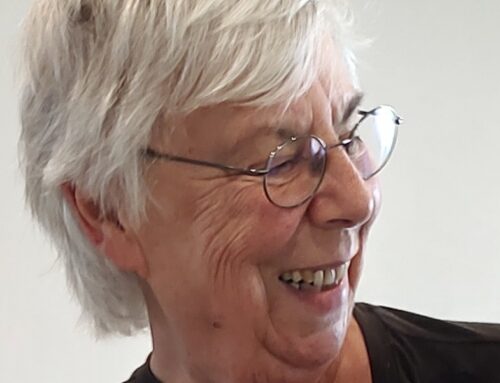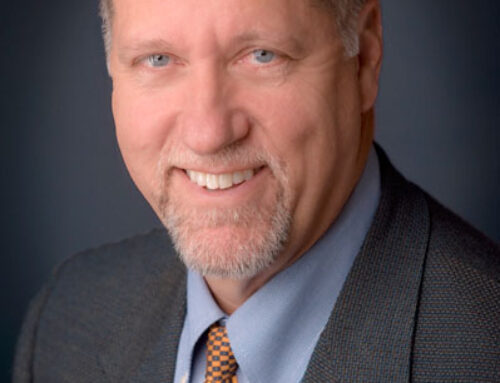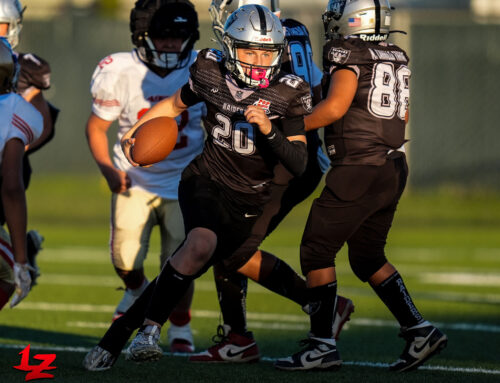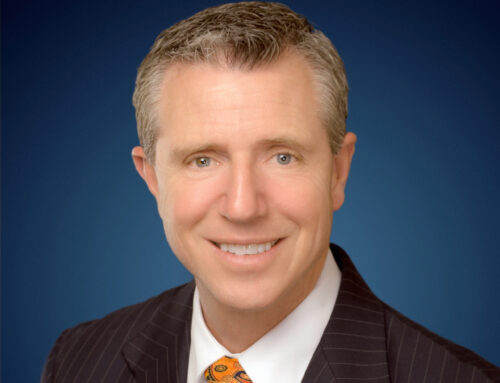Three survivors tell their stories at award presentation
Published in the August 2 – August 15, 2017 issue of Morgan Hill Life
By Marty Cheek
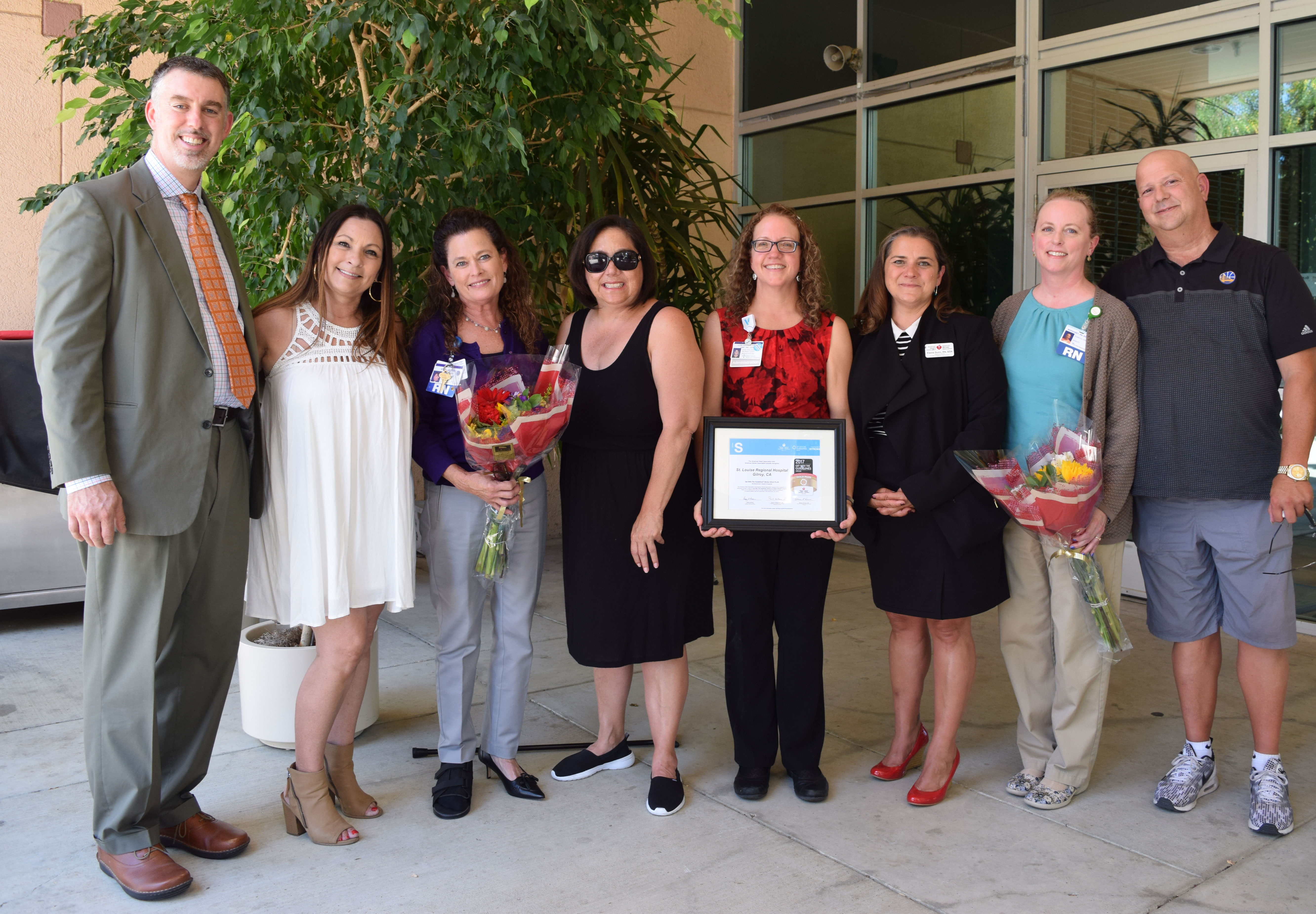
Photo courtesy St. Louise Regional Hospital
From left, John Hennelly, Chief Administrative Officer of St. Louise Regional Hospital; Deborah Dalcin, stroke survivor; Kellie Keahey, stroke coordinator; Lucretia Santana, stroke survivor; Lori Katterhagen, Chief Nursing Officer at SLRH; Elaina Gunn, the American Heart Association; Margaret Garretson, stroke coordinator; and Frederick Heidler, stroke survivor.
One month after her 50th birthday in 2014, Lucretia Santana got out of bed to make breakfast for her 10-year-old grandson, Jayden Estrada. Minutes later, the boy would be saving her life. She described the medical emergency to a crowd at St. Louise Regional Hospital at a July 19 award ceremony for the Stroke Team.
“When I got out of bed, I fell to the floor,” the Gilroy woman said. “I noticed my left side was numb. I could feel my hand was numb. I knew immediately that I was having a stroke.”
Her husband had left earlier in the morning to go on a business trip. She called out for Estrada and asked him to immediately phone a family member.
“He started the ball rolling to save my life,” Santana said. “He also then called his mother and his stepfather who lived a few blocks away. Everyone was there immediately.”
An ambulance rushed her to St. Louise and the Stroke Team went to work, taking care of her in the aftermath of the stroke trauma when poor blood flow to the brain results in cell death.
“This hospital is absolutely amazing. If it wasn’t for the work they did, I wouldn’t be standing here today,” she said. “I can’t thank everyone here enough for the hard work they did. They fought very hard to do so and I fought very hard to live. I fought so hard I broke a bed here. Really I did. I fought so hard.”
At the award presentation, Santana and two other stroke survivors also talked about how the St. Louise Stroke Team made a difference in saving their lives. Elaina Gunn, the regional director for quality and systems improvement for the American Heart Association and the American Stroke Association, presented the “2017 Get With the Guidelines Stroke Gold-Plus Target Stroke Honor Roll Elite Plus Award” to John Hennelly, chief administrative officer of St. Louise, and hospital staff.
“Every 40 seconds in the United States, someone has a stroke. And it is the number one cause of long-term disability,” Gunn said. “It costs more than $30 billion a year to the health care system.”
About 15 years ago, the American Heart Association decided to help medical professionals better coordinate their efforts to improve treatment for stroke patients. They developed the “Get with the Guidelines” program to share the most up-to-date information they need. St. Louise received the award because of its Stroke Team’s work with patients during the past two years. There are 15 measures they must meet with each patient to earn the honor.
“People earn and hospitals earn these awards because for a continuous period of time, hundreds of people are focused on doing the best that they can,” Gunn said. “And that begins from the moment someone calls 911. That begins before the patient arrives, and it starts right from that moment on and continues all the way through.”
A nurse, Gunn credited the medical professionals involved in helping stroke victims including paramedics, EMTs, fire fighters, nurses, physicians, radiologists, neurologists, lab techs, pharmacists, physical therapists, occupational therapists and speech therapists.
“All those people have to work together every single time they see a patient in order to provide the best care,” she said.
Survivor Debbie Trujillo-Dalcin had an ischemic stroke March 10. Driving to the doctor’s office that day, the Gilroy woman felt numbness and a headache. When she stepped into the office, her face was drooping. She was rushed to St. Louise and within minutes a nurse on the Stroke Team gave her TPA (tissue plasminogen activator), a clot-busting medication.
“I remember the diligence. Everyone was so focused on getting what had to be done done,” she said. “My daughter showed up and had to make some really tough decisions . . . I remember tons of people poking and prodding and doing whatever they had to do.”
A medevac helicopter flew her to Good Samaritan Hospital in San Jose which has a stroke center facility.
“If it had not been for this first step here, I don’t think I’d be standing here in the condition I am. For that I say, thank you, God, for answered prayers.”
Morgan Hill resident Freddie Heidler was in the shower of his parent’s home when he felt the numbness. A diabetic with heart issues, he had had a stroke several years before and knew the signs.
“It’s pretty traumatic getting out of the shower and realizing you’re having a stroke at six o’clock in the morning. Luckily, my parents were there and they rushed me to the hospital,” he said.
It took about 11 minutes for the family to drive from their west side Morgan Hill home to St. Louise. Every minute was precious for Heidler’s survival. And when they arrived, the Stroke Team immediately went into action.
“You guys are all great,” he said. “I don’t know what I would have done. I’m very touched. I never realized how bad diabetes could be, and I took a lot of things for granted. So I’m kicking my own butt right now, working on things. I’m so grateful.”



